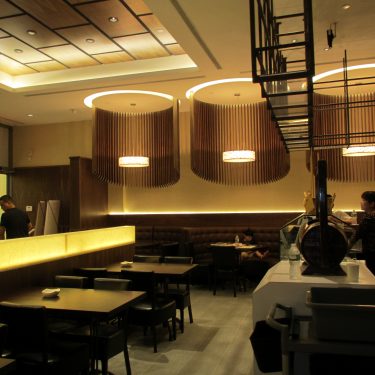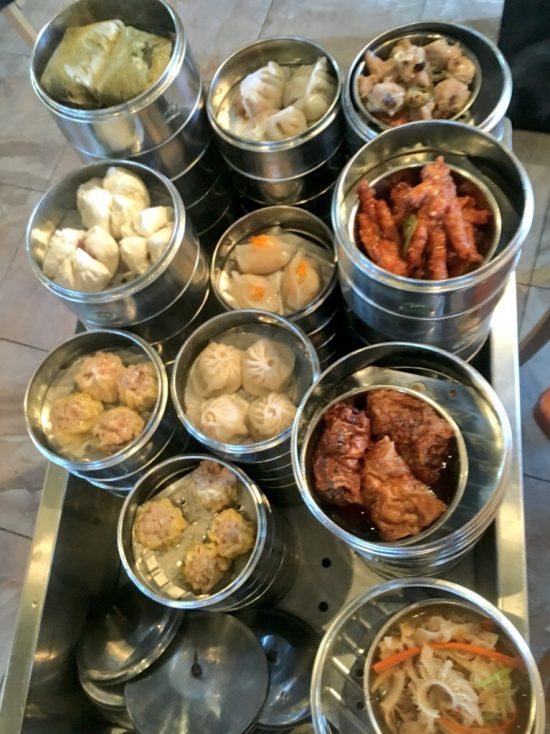
Particularly around the Bay Parkway D subway station the street is packed with Chinese shops, grocers, and restaurants. Now there’s a whole avenue - 86th Street, mainly clustered around each subway stop - filled with Chinese food. Banks and clothing stores exist amid a beauty school and fast-food joints - of which some signs, like at Popeyes, are in Chinese.īut markedly, when Yau first moved here, there were only a couple of Chinese restaurants. In between the burgeoning Chinese businesses, there are steakhouses, delis, pizzerias, sushi spots, and several Vietnamese options. The neighborhood is still home to several other populations, with Caucasians leading the way, but Asians come in second at 39 percent of locals, according to another city report. Yau has lived in Bensonhurst for 23 years, and witnessed the drastic Chinese growth and Italian “ retreat,” he says. “In Bensonhurst you eat ‘reputation.’ As long as you have a good reputation, you’ll build a loyal customer base.” “In Chinatown you eat ‘brand.’ The older the brand is, the more people visit,” he says in Cantonese. Nearby Duck Wong Wonton owner Yee Mon Yau agrees. He says the neighborhood businesses mainly cater to locals, since Sunset Park is so close and a more known Chinese food destination.

“A few years back the homes were packed with Christmas lights, but now the lights are nowhere to be found.”Ĭhen’s Cantonese bakery and barbecue restaurant lies among dozens of other Chinese bakeries, herbal medicine shops, restaurants, and grocers. “You can spot the change just by looking at Christmas lights,” Chen Won Dim Sum owner Jin Cai Chen says in Cantonese. As such, 86th Street - where the D line rumbles above ground - has become a mini Chinatown in itself. Out of 31,700 Chinese immigrants at that time, 27,300 were from mainland China and the rest from Hong Kong. The unassuming neighborhood of Bensonhurst quietly became home to New York City’s largest Chinese population as of a 2013 city report, the latest data available on NYC immigrants.

Sweet Yummy House: Ultra-spicy Sichuan, 83-13 Broadway Bensonhurst Shun Wang: Old-fashioned Cantonese, 81-25 Broadway Hua Rong: Fujianese fare, 8323 Broadway #1 Happy Stony Noodle: Taiwanese noodles and other dishes, 83-47 Dongan Ave. Lao Bei Fang: Longtime dumpling house, 83-05 BroadwayĬhinger: Fun Chinese hamburgers, 83-02 Broadway Noe says some clients from Shanghai specifically request the neighborhood when looking to buy in NYC. It’s a reason why Po Toi O HK Tea House owner Sidney Han doesn’t think Elmhurst is a Chinatown, per se.īut the concentration of Chinese people, and thus restaurants, cannot be denied, so much that news of the neighborhood has even found its way to China. The neighborhood is also home to many southeast Asian people and businesses, with an especially recent uptick in Thai spots, and there aren’t as many Chinese-serving businesses such as accountants, immigration consultation, and nail salons as in nearby Flushing. She estimates that 70 percent of her clientele is Chinese neighborhood residents, with a significant uptick in recent years of Chinese university students.Ĭhinese restaurants cluster around Broadway Avenue, near the Elmhurst Avenue M/R subway station and US Supermarket, with popular options like Taiwanese noodle soup spot Happy Stony Noodle, fiery Sichuan place Sweet Yummy House, hot pot house Shell Cove, and burger joint Chinger. Elmhurst, by contrast, offers a chiller place for Chinese people to reside. “The people! You can barely walk,” she says.

Wang Yan, owner of the 15-year-old dumpling house Lao Bei Fang, ascribes it to Flushing getting too crowded. Once those native ingredients were available, Chinese people flooded the neighborhood: In the 25 years since, China became the top country of origin for foreign-born residents, with more than 19,000 Chinese speakers of 142,289 people as of 2016, or about 14 percent. Like others across the city, it began with the opening of a Chinese supermarket, named US, in the early ’90s, according to neighborhood native and Douglas Elliman real estate broker Luis Noe.

ElmhurstĮlmhurst is often called the city’s fourth Chinatown. There’s never been a better time to eat Chinese food in NYC. Add Little Neck, the East Village, Forest Hills, Homecrest, Bensonhurst, and Elmhurst to the list of established Chinatowns around the city. There are in fact now nine Chinatowns in New York City, all in various stages of development but worthy in their own right. People of Chinese descent have spread farther out in larger numbers and developed communities along the way that at this point can be considered mini Chinatowns. But the number of Chinese immigrants in NYC has risen sharply in recent years - with Chinese people only trailing Dominicans as the largest foreign-born population in NYC.


 0 kommentar(er)
0 kommentar(er)
